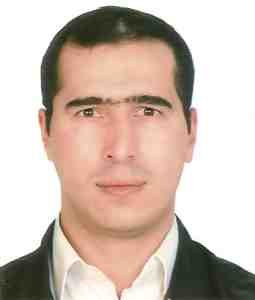
 Dr Sara Hooshmand, PostDoc Researcher
Dr Sara Hooshmand, PostDoc Researcher
Sara Hooshmand is a postdoctoral researcher in Nanotechnology Research and Application Center (SUNUM), Sabanci University, Istanbul, Turkey. She has obtained both her MSc and PhD in Analytical Chemistry and has been working on the development of various modified green and chemical nanosorbents and bioelectro-nanosensors for detection and quantification of trace amounts of anticancer drugs in biological samples using novel microextraction techniques. She has also worked on evaluating the protective effects of different plant extracts in rat models of hepatocellular carcinoma and type-2 diabetes during her first postdoc in Pharmacological Research Center of Medicinal Plants, Mashhad University of Medical Sciences, Mashhad, Iran. Currently, her research interests include nanosensors, sol-gel based optical sensors, microextraction techniques, nanobioactive glasses, herbonanoceuticals, drug-delivery, cancer therapy and animal model research.
Selected articles:
1) Hooshmand, S., Mahdinezhad, M.R., Taraz Jamshidi, S., Soukhtanloo, M., Mirzavi, F., Iranshahi, M., Hasanpour, M. and Ghorbani, A., 2021. Morus nigra L. extract prolongs survival of rats with hepatocellular carcinoma. Phytotherapy Research. https://doi.org/10.1002/ptr.7056
2) Hooshmand, S., Mollazadeh, S., Akrami, N., Ghanad, M., El-Fiqi, A., Baino, F., Nazarnezhad, S. and Kargozar, S., 2021. Mesoporous Silica Nanoparticles and Mesoporous Bioactive Glasses for Wound Management: From Skin Regeneration to Cancer Therapy. Materials, 14(12), p.3337. https://doi.org/10.3390/ma14123337
3) Hooshmand, S., Kargozar, S., Ghorbani, A., Darroudi, M., Keshavarz, M., Baino, F. and Kim, H.W., 2020. Biomedical waste management by using nanophotocatalysts: The need for new options. Materials, 13(16), p.3511. https://doi.org/10.3390/ma13163511
 Dr Oğuz Bayındır, PostDoc Researcher
Dr Oğuz Bayındır, PostDoc Researcher
Orientation of Graphite Electrodes for Fast Charge Li-ion Batteries”, ACS Applied Materials &
Interfaces, 2021, PP(XXXX,): XXX-XXX, doi: 10.1021/acsami.1c19735.
Produced Graphene Oxide: Comparison of Amperometric Sensor Performance for NADH”, IEEE
Sensors Journal, 2018, PP(99):1-13, doi: 10.1109/JSEN.2018.2879651.
Gold Electrodes”, ChemistrySelect, 2018, 3, 2167-2173, doi: 10.1002/slct.201702699.
Graphene/Methylene Blue Nanocomposite Thin Films on Au(111)”, Polymer Composites, 2017, 38, E118-E127, doi: 10.1002/pc.24021.

Dr Ameen Uddin Ammar, PostDoc Researcher
 Zeynep Alpsoy, Project Researcher
Zeynep Alpsoy, Project Researcher

Kamal Asadipakdel, Co-supervised PhD Student
Former Group Members
- Dr. MONA NEJATPOUR
- Dr. REFİK ARAT
- Dr. FAIZAH MD YASIN
- Dr. ERTUĞ AVCI
- Dr. DENIZ KÖKEN
- Dr. İSMAİL FİDAN
- Dr. MOHAMMED AHMED ZABARA
- TUÇE FİDAN
- QANDEEL SALEEM
- MİLAD TORABFAM
- PELİN DURU
- SILA ÖZTÜRK
- ÇAĞDAŞ AKŞİT
- MENDUHA ECE ÖZ
- ENES KÖK
- MERVE CANBOLAT
- PINAR POÇAN
- FAIQA DAWOOD
- LAUREN MOORE
- SELEN EZGİ CANKURTARAN
- RUKİYE-AYSHE EGELİ
 NanoCHemCoM
NanoCHemCoM